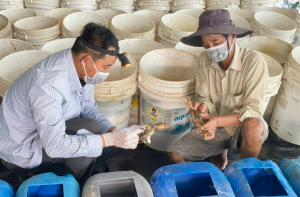
Soft-Shell Crab Farming in Plastic Bins in Thạnh Phú: A Success Story
17 June 2025 1929 View
Since 2021, Mr. Đào Phước Xoàn began experimenting with soft-shell crab farming. After four years of self-directed research, trial-and-error, and numerous failures, he has now mastered the technical skills and essential experience to raise soft-shell crabs successfully.
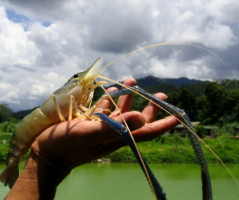
Profit Breakthrough with All-Male Giant Freshwater Prawn Farming
17 June 2025 1661 View
Giant freshwater prawns (Macrobrachium rosenbergii) are highly adaptable to freshwater environments, and have also been domesticated for brackish water farming with impressive growth performance. Compared to black tiger shrimp and whiteleg shrimp, this species offers several advantages — easier to farm, faster growth rates, less susceptibility to disease, and rapid adaptation to varied environments and water sources.
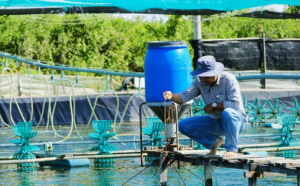
Shrimp Farmers Seeking a Sustainable Path Forward
17 June 2025 1668 View
In recent years, Vietnam’s shrimp farming industry has faced mounting difficulties, including unpredictable weather, environmental issues, disease outbreaks, and market volatility — all of which have significantly impacted farmers. Over the past two years especially, the sharp drop in raw shrimp prices has negatively affected farmers’ confidence and willingness to invest.
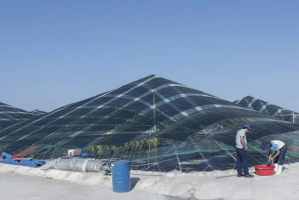
Tips to Protect Farmed Aquatic Species During Hot Weather
20 June 2025 1510 View
Regularly check and maintain environmental parameters within suitable thresholds. Keep pond water levels at a minimum of 1.3–1.5 meters. Increase paddlewheel aerator operation to prevent thermal stratification and enhance dissolved oxygen levels. Use probiotics to treat both water and pond bottom.

A Groundbreaking Project to Revolutionize Shrimp Farming in Southeast Asia
04 July 2025 2013 View
A £3-million, 3-year initiative aims to equip small-scale shrimp farmers with affordable tools for real-time water quality monitoring, disease detection, and environmental threat forecasting.
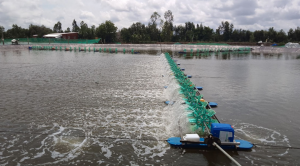
Japan: First-Ever Simultaneous Cultivation of Whiteleg Shrimp and Herbs in Seawater
17 June 2025 1929 View
In this pilot experiment, seawater will be used in an aquaponics system to raise whiteleg shrimp — a species in high demand in Japan. The same water will be circulated through planting beds to grow salt-tolerant crops such as Swiss chard and high-value herbs. Throughout the experiment, sensors will be used to collect essential data for both shrimp and plants, and their symbiotic effects will be studied with the goal of commercializing brackish water aquaponics. As part of this goal, the company
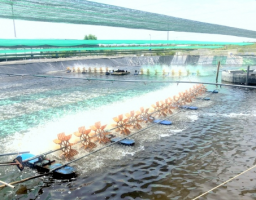
Application of Science & Technology: A “Lever” to Elevate Vietnam’s Fisheries Sector
17 June 2025 1505 View
Vietnam’s fisheries sector has achieved many significant milestones in recent years, contributing to the country’s national economic development. In 2024, total seafood output reached nearly 9.7 million tons, with export turnover exceeding USD 10.03 billion, placing Vietnam among the Top 3 largest seafood exporters in the world. Science and technology have been a key driving force behind this success, especially in selective breeding of major aquaculture species such as black tiger shrimp,
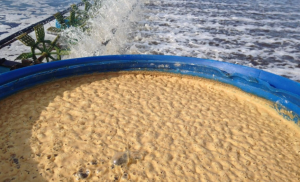
Distinguishing Between Powder and Liquid Probiotics in Aquaculture
17 June 2025 1711 View
Probiotics play a crucial role in aquaculture due to their practical benefits. Firstly, they help improve water quality by breaking down excess organic matter, uneaten feed, feces, and dead plankton. This reduces the formation of toxic compounds such as ammonia (NH₃), nitrite (NO₂⁻), and hydrogen sulfide (H₂S).
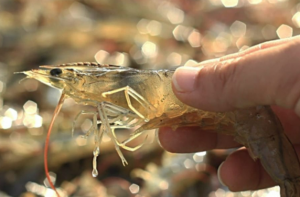
Cost-Saving Solutions for Shrimp Farming: Reducing Production Costs and Preventing Diseases
04 July 2025 1881 View
As of now, the total brackish water shrimp farming area in Soc Trang province has reached 16,000 hectares, including 13,470 ha of whiteleg shrimp and 2,530 ha of black tiger shrimp. The estimated harvested output of brackish shrimp is 35,500 tons, with damaged shrimp area accounting for 1.8%. Raw shrimp prices have slightly increased: whiteleg shrimp sized 20–80 pieces/kg are priced higher than the same period last year, ranging from 24,000 to 32,000 VND/kg, while prices for other sizes remain
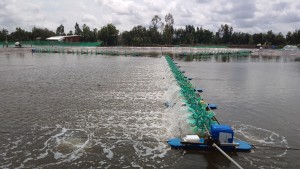
Bac Giang, Vietnam: 150 Hectares of Aquaculture Integrated with Automation Technologies
04 July 2025 1704 View
Bac Giang province is taking bold steps toward smart and sustainable aquaculture. Currently, 150 hectares of aquaculture farming in the province are applying automation technologies, demonstrating the region’s commitment to innovation in the seafood sector.
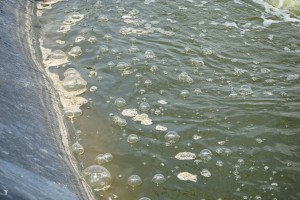
Sediment Settling Techniques for Aquaculture Ponds
04 July 2025 1920 View
Sediment refers to a mixture of small solid particles such as clay, dust, and fine silt carried by water currents. In water sourced from rivers, canals, or reservoirs—especially during the rainy season or flood discharge—sediment levels can be extremely high.
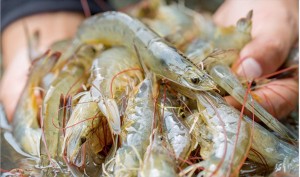
Ecuador’s Shrimp Industry Amid Global Tariff Turmoil – Strategic Lessons for Vietnam
04 July 2025 1793 View
Ecuador has emerged as a standout performer in the global shrimp industry, achieving remarkable growth despite significant global challenges — including anti-dumping (AD) duties, countervailing duties (CVD), and rising trade barriers from the U.S. Instead of relying heavily on the Chinese market as in previous years, Ecuadorian shrimp exporters quickly shifted strategies. Notably, exports to Europe reached 155.3 million pounds in Q1 2025 — a 37% year-on-year increase — propelling the EU
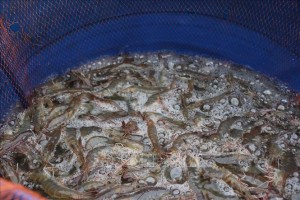
Adverse Weather Forces Shrimp Farmers to Suspend Stocking
04 July 2025 1670 View
Mr. Huynh Van Thuyet, Director of Cho Ben Cooperative (Long Dat District), reported that the cooperative completed its shrimp harvest about a month ago but has yet to stock for the new crop due to extreme weather and unseasonal rains affecting water quality. “With unstable conditions, shrimp are more susceptible to disease and mortality. We are taking this time to thoroughly clean the ponds and will only resume stocking when the weather becomes more favorable,” Mr. Thuyet


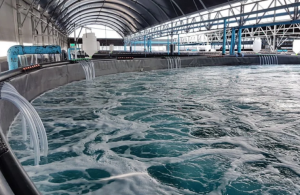
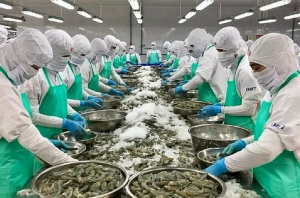
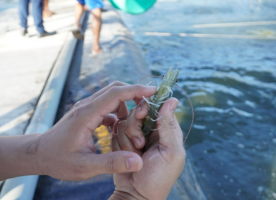
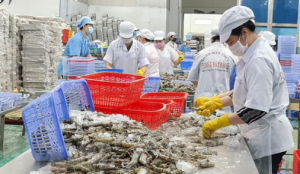
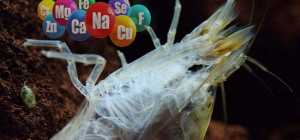
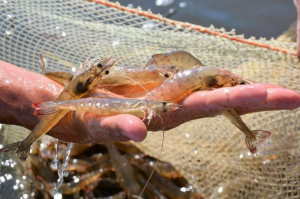
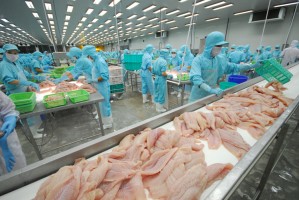
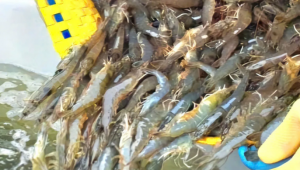
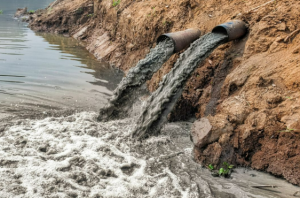
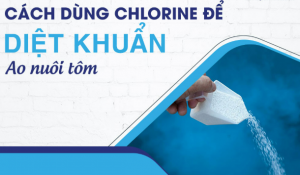
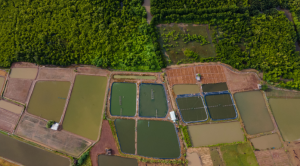

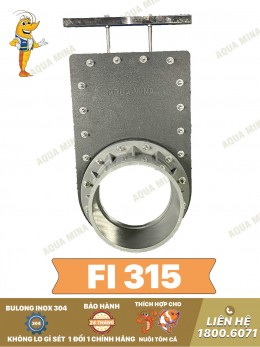
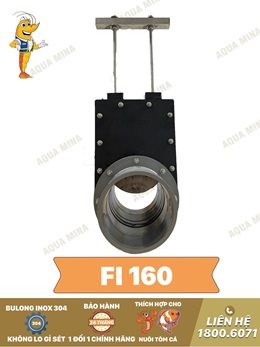
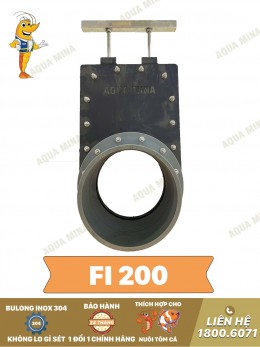
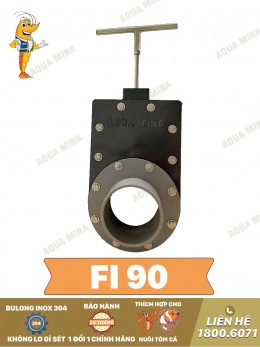
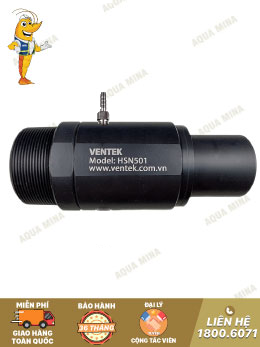
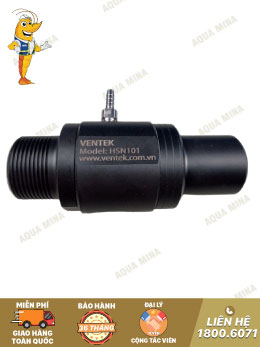
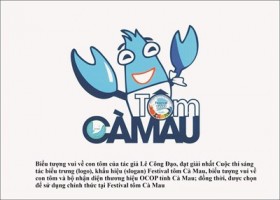
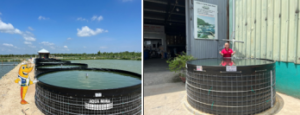
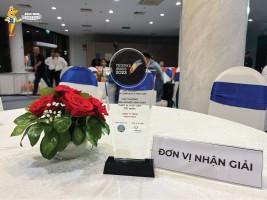
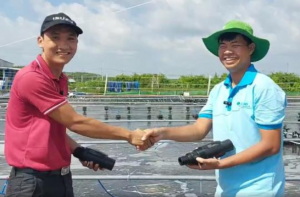
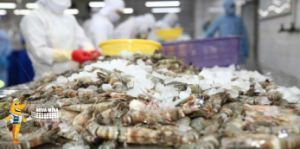
.jpg)